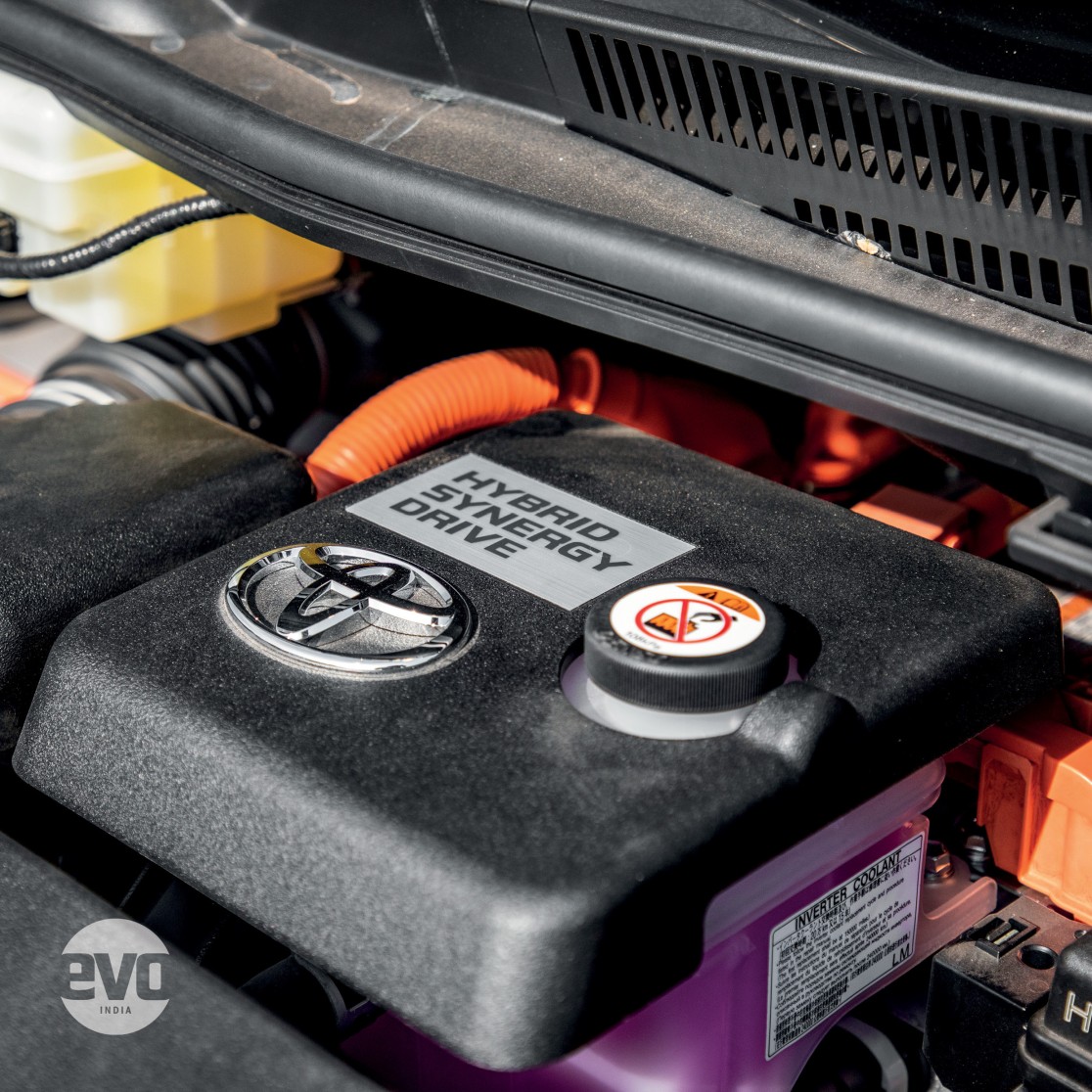Toyota’s Self-charging Hybrid System: A technical deep-dive
There are hybrids, plug-in hybrids, fully electric cars and then we have something that Toyota calls “self-charging hybrids”. Let’s delve a little deeper and understand this tech better. This article will show how the hybrids work, what is the tech behind it, what are the types of hybrid and so on.
 Toyota's self-charging hybrids bridge the gap between plug-in hybrids and mild hybrids
Toyota's self-charging hybrids bridge the gap between plug-in hybrids and mild hybridsToyota has been a huge supporter of hybrid technology, launching the world’s first hybrid production car in the Prius and then spreading that technology across its line-up. In India, we’ve got the Camry Hybrid and the Vellfire on sale – both cars using a combination of a petrol engine and electric motors to propel themselves. Toyota calls them ‘self-charging hybrids’. To understand what self-charging hybrids are, we need to first look into what hybrids are and the different types of hybrids available right now.
First, we have the mild hybrids; they are cars that have a combustion engine which works in tandem with a battery but the support from the electric drivetrain is minimal. The battery generally powers the car’s electricals in tandem with a stop-start system, and occasionally can fill in torque to assist the engine under heavy loads. Then at the top of this pyramid, we have the plug-in hybrids. Plug-in hybrids have a high degree of electric assistance. These cars can run in full-EV mode for long periods of time, and have driving modes that combine both ICE and EV modes for either efficiency or performance. These hybrids have large battery capacities and need a wall socket to recharge them. Then there’s the middle ground – hybrids with medium-sized batteries that can recharge themselves, but can also provide much more assistance to the drivetrain than mild hybrids. And Toyota’s self-charging hybrids fall under this category!
 The Toyota Camry and the Vellfire can even be used in full EV mode
The Toyota Camry and the Vellfire can even be used in full EV modeToyota's self-charging hybrids on the Toyota Camry and the Toyota Vellfire use regeneration to recharge the battery. The kinetic energy that is lost while braking is used to run a generator to recharge the on-board battery. They can also use the engine to recharge the battery. So every time you’re driving using the combustion engine, your battery is topped up. The Toyota Camry and the Vellfire can be used in full EV mode. Which means, the engine is off and the car moves completely on electric power, at low speeds. As speeds rise, the engine kicks in seamlessly. This hybrid system also assists the engine under acceleration by supplying torque which boosts the performance and efficiency. It has a power split device which allows the ICE unit and the electric motor to be used together as well as work independently of the other. All this means that the Camry is very efficient and as per ARAI, it gives a mileage of 19.16kmpl. In fact, when evo India took the Camry up to Chorla ghat a few months ago, it gave a mileage of 25kmpl. The only difference in the hybrid system between the Camry and the Vellfire is that the Vellfire gets a second electric motor for the rear axles to give it all-wheel drive capabilities.
 the Toyota Vellfire gets a second electric motor for the rear axles
the Toyota Vellfire gets a second electric motor for the rear axles In a market this fresh, where a lot of time is spent to know the pros and cons of different types of hybrids, Toyota’s self-charging hybrid term makes life a lot easier for the buyers. They completely eliminate dependence on infrastructure required to charge your battery, you’re spending no time to charge your battery, there is no range anxiety that the EVs bring, it is environment friendly and when it comes to drivability, the self-charging hybrid with all the assistance it gives to the petrol engine, makes it a whole lot more fun and involving.


